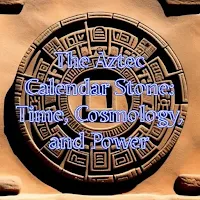What did the Aztec calendar stone emphasize?
What did the Aztec calendar stone emphasize?
The Aztec calendar stone, also known as the Sun Stone, was a remarkable piece of Mesoamerican art that served multiple purposes within Aztec society.
Representation of Time
At its core, the calendar stone emphasized the Aztec understanding of time. It depicted the various cycles of time, including the solar year, the tonalpohualli (a 260-day ritual calendar), and the xiuhpohualli (a 365-day agricultural calendar). These calendars were crucial for organizing religious ceremonies, agricultural activities, and other aspects of daily life.
Cosmological Significance
The intricate carvings on the stone symbolized the Aztec worldview and their understanding of the universe. The central image of the stone is often interpreted as the face of the sun god, Tonatiuh, representing the central role of the sun in Aztec cosmology. Surrounding the sun god are various celestial symbols, such as stars, rays, and celestial monsters, which convey the interconnectedness of the natural and supernatural realms.
Religious Beliefs
The calendar stone served as a focal point for religious ceremonies and rituals. It was likely used as an altar or sacrificial platform during important religious festivals, symbolizing the cyclical nature of life, death, and rebirth. The intricate carvings on the stone also included symbols associated with Aztec deities and mythological narratives, reinforcing the religious significance of the artifact.
Political Authority
The calendar stone may have also been used as a symbol of political authority and legitimacy. It was likely commissioned by a powerful ruler, such as Moctezuma I or Axayacatl, to showcase their connection to divine forces and their role as intermediaries between the earthly realm and the divine realm. Displaying the calendar stone in a prominent public space, such as the Templo Mayor in Tenochtitlan, would have reinforced the ruler's prestige and authority.
Overall, the Aztec calendar stone emphasized the interconnectedness of time, cosmology, religion, and political power within Aztec society. It served as a visual representation of the Aztec worldview and played a central role in religious ceremonies, political symbolism, and cultural identity.
FAQ Facts:
Q: What is the Aztec calendar stone?
A: The Aztec calendar stone, also known as the Sun Stone, is a large carved stone artifact that served as a monumental representation of time, cosmology, and religious beliefs in Aztec culture.
Q: What did the Aztec calendar stone emphasize?
A: The calendar stone emphasized various aspects, including the cycles of time, cosmological symbolism, religious beliefs, and political authority within Aztec society.
Q: How did the Aztec calendar stone represent time?
A: It depicted the solar year, the tonalpohualli (a 260-day ritual calendar), and the xiuhpohualli (a 365-day agricultural calendar), showcasing the Aztec understanding of time cycles.
Q: What cosmological significance did the Aztec calendar stone hold?
A: The intricate carvings symbolized the Aztec worldview, with the central image representing the sun god and surrounding symbols representing celestial bodies and supernatural forces.
Q: How was the Aztec calendar stone used in religious practices?
A: It likely served as an altar or sacrificial platform during religious ceremonies, symbolizing the cyclical nature of life, death, and rebirth, and featuring symbols associated with Aztec deities and mythological narratives.
Q: What role did the Aztec calendar stone play in political authority?
A: It may have been used as a symbol of political legitimacy, commissioned by rulers to showcase their connection to divine forces and reinforce their authority as intermediaries between the earthly and divine realms.
